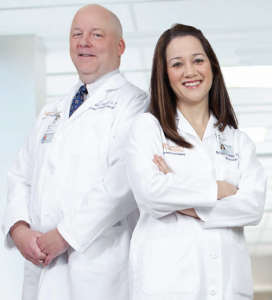When it comes to conditions that affect the aorta — our body’s largest blood vessel — men and women are very different.

Being aware of these gender differences could be lifesaving, especially for the over-65 set.
Aneurysms Are More Deadly for Women
Aneurysms affect more men, but they are more deadly for women.
The aorta carries blood from our heart to all of our vital organs. In some people, a bulge — a weak area known as an aneurysm — forms in either the chest (thoracic) area or lower (abdominal) part of the aorta.
“It’s a disease that affects four men for every woman. But when women get this condition, it is typically associated with a higher mortality,” says UVA vascular surgeon Gilbert R. Upchurch Jr., MD. “Their risk of dying from surgery is 1.3-fold higher than that of men.” Women also typically develop an aneurysm 10 years later than men.
Treatment Guidelines
What do doctors recommend? Operating on a bulge over 5 centimeters. But this standard can mean different things for men vs. women:
- For men, a 5-cm bulge is two times the normal size of their aorta.
- For women, a 5-cm bulge can be three times the normal size of their aorta.
What should women do? Upchurch suggests women should have their aorta repaired before the bulge reaches five centimeters.
Taking action can mean life or death: Few people survive an aorta that ruptures.
Fewer Treatment Options for Women
For the past dozen years, doctors have been offering a less risky treatment alternative to traditional “open” surgery: endovascular repair. This typically done in an outpatient setting or requires only an overnight hospital stay. Doctors thread a mesh tube (a stent graft) up through a blood vessel in the patient’s leg.
Unfortunately not as many women qualify for this approach. Their vessels are too narrow for a stent to be threaded through, and the bulging area is more likely to be too close to the vital kidney arteries, UVA vascular surgeon Margaret “Megan” Tracci, MD, explains.
Who Needs an Aorta Screening?
Get an ultrasound scan for an abdominal aortic aneurysm if you have major risk factors:
- Older than 65
- History of smoking
- History of high blood pressure
Get screened at a younger age if you have a family history of aneurysms.
If the blood vessel bulge is small enough, treatment usually consists of getting scanned every six months to make sure it’s not getting larger.